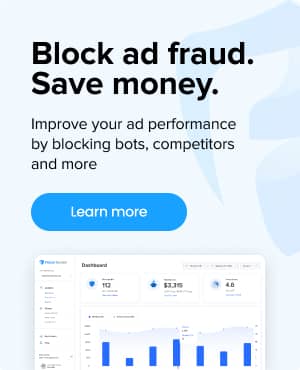What is a demand-side platform (DSP) in advertising?
A Demand-Side Platform (DSP) enables advertisers to purchase digital ad inventory across various channels and publishers using automation.
Leveraging real-time bidding (RTB) technology, DSPs streamline the ad buying process for efficient and targeted ad placements. They consolidate multiple ad exchanges and networks (instead of bidding on just one, like Google Ads), offering a unified way to manage digital advertising campaigns.
How do demand-side platforms work?
DSPs streamline the ad buying process by connecting advertisers with digital publishers through ad exchanges. At a high level, this is the process:
- Campaign Setup: Advertisers define their target audience, budget, and campaign goals and upload their ad creatives onto the DSP.
- Access to Inventory: DSPs connect to various ad exchanges and Supply-Side Platforms (SSPs), accessing a wide range of available ad inventories.
- Real-Time Bidding: DSPs analyze available ad inventories in real-time and place bids based on the advertiser’s targeting criteria and budget. DSPs are competing for ad impressions.
- Ad Placement: The winning DSP automatically places the ad on the publisher’s platform, all within milliseconds.
- Performance Tracking: DSPs track campaign performance, providing insights and data for optimization and future strategy formulation.
Key features of DSPs
Sophisticated Targeting: DSPs offer advanced targeting options like geo-targeting, demographic targeting, contextual targeting, and behavioral targeting, allowing for precise audience segmentation.
Automated Real-Time Bidding (RTB): The core of DSP functionality, RTB allows for efficient and instantaneous bidding on ad inventory.
Ad Server: Manages ad serving and tracks performance data for campaign optimization.
Budget Management: Allows advertisers to set and monitor campaign budgets effectively.
Comprehensive Analytics and Reporting: DSPs provide detailed analytics on ad performance, including metrics like click-through rates, engagement levels, and conversion rates, enabling data-driven decision-making.
Integration Capabilities: DSPs often integrate with third-party data providers, ad exchanges, and other marketing tools, enhancing their functionality and reach.
Why should you use a demand-side platform?
DSPs give you full-control to manage and track multiple ad campaigns across a wide range of net
- Efficiency: DSPs automate and streamline the ad buying process.
- Targeted Advertising: Advanced targeting options lead to more relevant ad placements.
- Real-Time Optimization: Allows for immediate adjustments based on campaign performance.
- Cost-Effectiveness: Reduces wasted ad spend through precise targeting and bidding.
⚠️Situations Not Ideal for DSP Use:
- Limited Budgets: Small budgets might not leverage the full potential of DSPs.
- Niche Audiences: Extremely specific audience targets might not be fully catered to by DSPs.
- Simplicity Preference: For straightforward, non-complex campaigns, simpler tools might suffice.
What is the difference between a DSP and SSP?
At a high level, DSPs are used by advertisers to buy ad inventory, while SSPs enable publishers to sell their inventory.
While DSPs focus on the advertiser’s needs (targeting, bidding, campaign management), SSPs cater to publishers, optimizing inventory pricing and ensuring ad quality.
DSPs use algorithms and RTB for ad buying, integrating with data management platforms (DMPs) and ad servers.
SSPs focus on inventory management and optimization, connecting to ad networks and exchanges.
What is the difference between "self-service" vs "managed" DSPs?
Self-Service DSPs: Provide advertisers complete control over their campaigns, from creation to optimization.
Managed DSPs: Offer full-service management, including campaign planning, execution, and optimization, often requiring minimum budget commitments.
Top DSPs by popularity
- Stack Adapt
- Amazon DSP
- The Trade Desk
- Google Display & Video 360 (DV360)
- Basis Technologies
- Criteo
- Xandr Invest
- Adobe Advertising
- Amobee Advertising Platform
- Beeswax
- Conversant
- Quantcast
- SmartyAds DSP
How Can I Choose the Right DSP?
Understand Your Target Audience: Ensure the DSP aligns with your audience’s preferences and behaviors.
Evaluate Features and Integration: Look for advanced targeting, analytics, and integration with other marketing tools.
Consider Ad Formats and Inventory: Choose a DSP that supports your preferred ad formats and offers a robust inventory.
Assess User Interface and Support: Opt for a DSP with an intuitive interface and strong customer support.
Analyze Cost Structure: Understand the pricing model to ensure it fits your budget and advertising objectives.
Frequently asked questions
How much does a DSP cost? Is it worth it?
DSPs typically charge about 8% of your total ad spend. And most have higher minium ad spend requirements to use their service. For example, Amazon DSP requires $50,000 /yr for their managed service and $35,000 /yr for their self-service (varies by country).
A DSP can be worth the money if you have multi-channels campaigns and you’re looking to reach a very large audience.
Is programmatic advertising the same as using a DSP?
Programmatic advertising encompasses the broader automated buying and selling of ad space, of which using a DSP is a crucial component.
Can DSPs be used for all types of digital advertising?
Yes, DSPs support various ad formats, including display, video, mobile, and connected TV.
Are there best practices for targeting on GDN?
Targeting on GDN should be a balance between reaching a broad audience and maintaining relevance, all while keeping your key performance metrics in mind (CPA, CPL, ROAS, etc.). Utilize a combination of demographic, interest-based, and contextual targeting to align your ads with the most appropriate audience. But be careful, GDN is a very large network and you can quickly spend your budget if you don’t target correctly.




